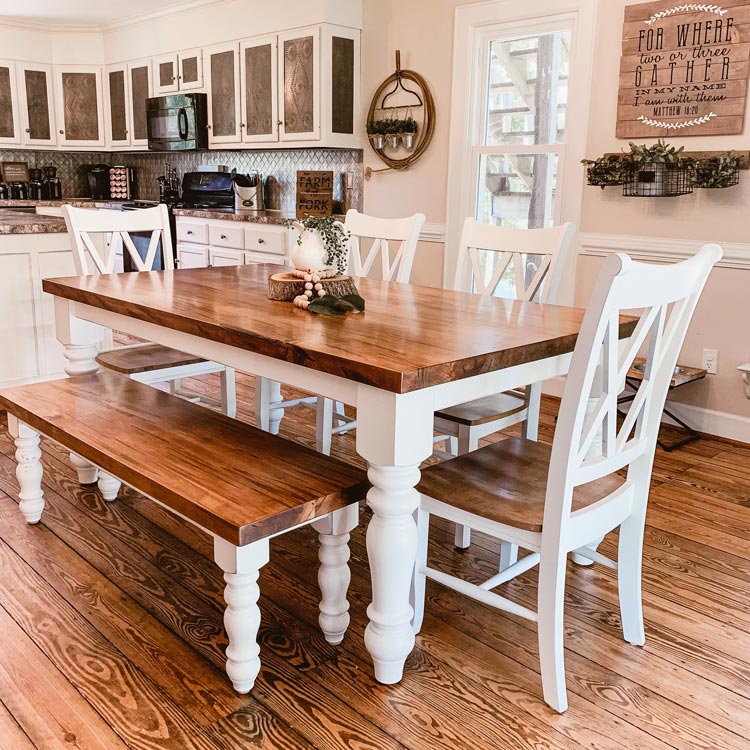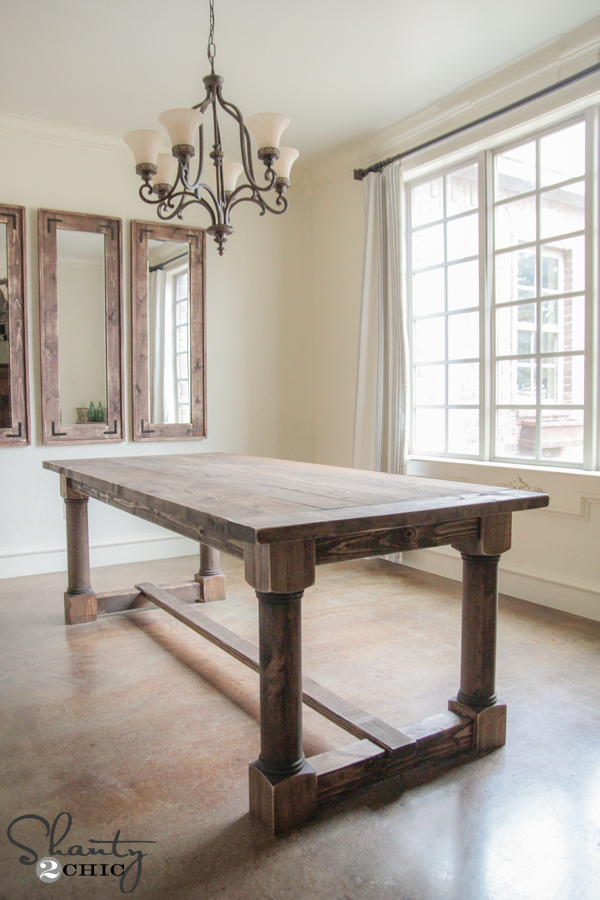From Typical to Modern: Find the Ideal Dining Room Table Legs for Your Style
While classic layouts such as cabriole and turned legs stimulate a feeling of timeless sophistication, contemporary styles like barrette and geometric alternatives offer a chance for striking aesthetic rate of interest. As you think about these aspects, the question remains: exactly how can you flawlessly integrate these varied leg designs to produce a harmonious eating experience?
Comprehending Table Leg Styles
The variety of dining-room table leg styles can significantly influence both the aesthetic appeals and functionality of the space. Each leg style adds one-of-a-kind aesthetic components and functional functions, providing to diverse layout preferences and use requirements. Understanding these styles is essential for picking the right table that lines up with your overall indoor layout vision.
As an example, tapered legs offer a tidy, traditional appearance that can improve a room's sophistication, while stand bases give security and maximize legroom, making them excellent for smaller sized spaces. Hairpin legs, a hallmark of mid-century modern-day design, present an industrial flair, permitting for an airy, open feeling. Trestle legs stimulate rustic appeal, providing robust support and a feeling of timelessness.
Moreover, the selection of materials plays a considerable role. Wooden legs can bring heat and appearance, whereas steel choices frequently convey a sleek, modern ambiance. Eventually, comprehending table leg designs is essential for producing a natural eating location that mirrors individual style while making sure usefulness and comfort. By thoughtfully thinking about these elements, you can enhance both the practical and aesthetic charm of your eating room.
Typical Table Leg Options
When selecting dining-room table legs, standard alternatives commonly personify classic elegance and craftsmanship. These layouts show an abundant heritage and a commitment to high quality, making them excellent for those who value traditional looks.
One of the most famous traditional leg designs is the cabriole leg, defined by its elegant curved shape. This design frequently features decorative makings and is most typically found in Queen Anne and Chippendale furniture. One more preferred choice is the transformed leg, which boasts a series of smooth, rounded shapes that supply a timeless look while preserving stability.
Moreover, the straight leg, while straightforward, supplies a unadorned and durable framework that can mix perfectly with a range of tabletop designs. For those drawn to ornate outlining, claw-and-ball feet legs stimulate a feeling of splendour and can offer as a stunning centerpiece in any kind of eating area.
Finally, stand bases, although not strictly legs, give a different typical alternative that permits sufficient legroom and can be wonderfully carved. Each of these typical leg designs adds to the overall atmosphere of an eating area, weding function with visual allure.

Modern Table Leg Styles
Modern table leg styles offer a varied series of styles that highlight clean lines and cutting-edge materials. These designs typically focus on performance while working as striking prime focus within a dining space. Minimal appearances prevail, with legs crafted from products such as steel, glass, and engineered wood, which add to a airy and modern feeling.
One prominent style is the barrette leg, characterized by its slim, tapered structure that supplies stability without overwhelming the tabletop (dining room table legs). This style is often found in mid-century modern furniture and can effortlessly complement numerous table forms. Another fad is making use of geometric forms, where legs might take on unbalanced or angular kinds, adding aesthetic interest and a touch of virtuosity

Mixing Styles for One-of-a-kind Areas
Usually, house owners seek to develop unique eating spaces that show their personal style by mixing numerous style components. This technique permits the incorporation of diverse visual appeals, resulting in a harmonious yet unique environment. Coupling a rustic wood table with streamlined, contemporary steel legs can develop an eye-catching comparison that elevates the area's total charm.
Additionally, integrating vintage table legs with modern tabletops can stimulate a sense of history while maintaining a contemporary sensibility. Such combinations not just display individual taste yet additionally urge creativity, permitting property owners to curate an area that really feels both individual and inviting.
Shade plays an essential function in this blending procedure; selecting table legs that complement or comparison with the existing color scheme can improve aesthetic interest. Whitewashed legs can soften the boldness of a dark table surface, creating a well balanced aesthetic.
Tips for Picking the Right Legs
Selecting the right table legs is important for you could try these out achieving both functionality and visual charm in your dining area. Begin by considering the overall design of your space. Traditional setups take advantage of legs that feature detailed makings or turned styles, while modern areas may require streamlined, minimal designs.
Next, evaluate the elevation and stability of the legs. dining room table legs. Basic dining tables vary between 28 to 30 inches in height, so guarantee the legs complement this dimension for convenience. Additionally, robust materials, such as wood or metal, can improve stability and long life
Evaluate the leg shape too-- choices consist of right, tapered, or pedestal styles. Straight legs offer a timeless appearance, while tapered legs can add a touch of style. Pedestal bases offer ample legroom and are suitable for smaller sized rooms.
Conclusion
In summary, choosing the optimal eating area table legs requires cautious factor to consider of both conventional and contemporary styles. By balancing leg style, height, and material with the total decoration, a cohesive and welcoming ambience can be attained.
The selection of eating room table leg styles can substantially affect both the aesthetic appeals and capability of the room. Inevitably, comprehending table leg designs is crucial for producing a cohesive eating location that reflects personal design while guaranteeing usefulness and comfort.One of the most iconic standard leg designs is the cabriole leg, characterized by its graceful curved shape. Straight legs provide a classic appearance, while tapered legs can include a touch of elegance.In summary, picking the optimal directory eating room table read this legs needs careful factor to consider of both modern-day and standard designs.